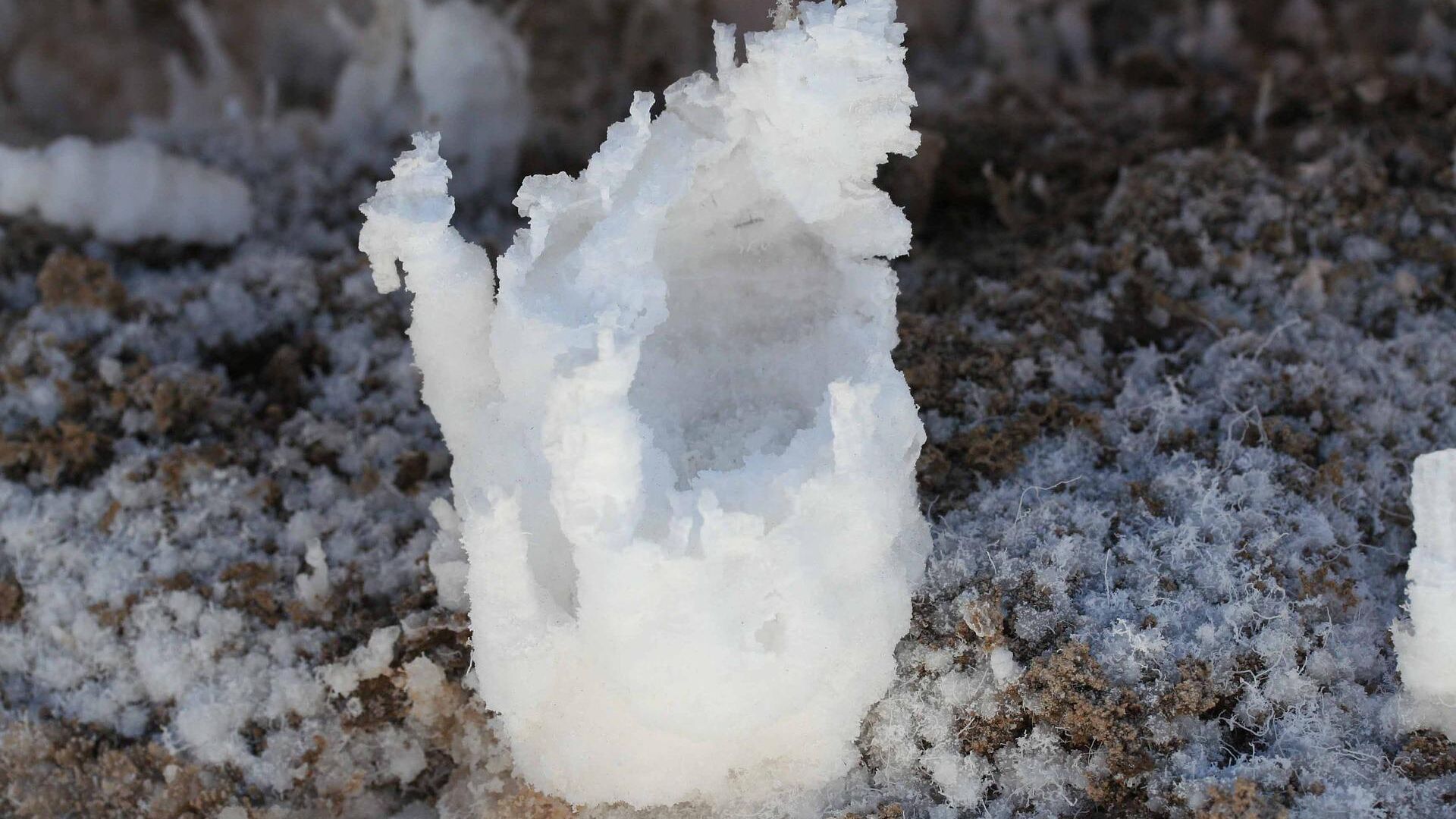https://sputnikglobe.com/20220516/scientists-unearth-830-million-year-old-organisms-trapped-in-rocks---and-they-may-still-be-alive-1095549871.html
Scientists Unearth 830 Million Year Old Organisms Trapped in Rocks - And They May Still Be Alive
Scientists Unearth 830 Million Year Old Organisms Trapped in Rocks - And They May Still Be Alive
Sputnik International
A natural mineral called halite, also known as sodium chloride or salt rock, could potentially become the new focus of geological studies. 16.05.2022, Sputnik International
2022-05-16T18:26+0000
2022-05-16T18:26+0000
2022-10-19T18:54+0000
science & tech
organisms
rock
life
https://cdn1.img.sputnikglobe.com/img/07e6/05/10/1095549846_0:100:1921:1180_1920x0_80_0_0_ae278285efd196920c4758d092d7b108.jpg
Researchers have discovered remnants of ancient life trapped inside halite crystals dating back to more than 800 million years ago.The potentially ground-breaking discovery was made by a geology team led by Sara Schreder-Gomes of West Virginia University on an investigation in central Australia.The organisms have been extracted from the 830-million-year-old Browne Formation with the help of transmitted light and ultraviolet–visible (UV-vis) petrography. The objects that the team found are said to be "consistent in size, shape, and fluorescent response with cells of prokaryotes and eukaryotes and with organic compounds."Remarkably, these organisms may even still be alive. Despite the belief that radiation destroys all organic matter over long periods, in 2002, it was discovered that material contained in 250 million-year-old halite was exposed to only negligible amounts of radiation. As such, researchers ask if halite could also preserve organisms for 830 million years.Salts such as halite do not preserve organic matter in the same way as rock, turning the organisms into fluids trapped inside the crystals instead of solidifying ancient microfossils. Still, they contain valuable scientific information such as water temperature at the time of the crystals' formation, water chemistry and possibly even atmospheric temperature when formed.The findings may also pave the way for a potential discovery of life on Mars, where, according to the researchers' suggestions, deposits similar to Australia's Browne Formation can be found. Aside from the extra-terrestrial aspirations, the discovery may provide a better understand of Earth's own history as well.
Sputnik International
feedback@sputniknews.com
+74956456601
MIA „Rossiya Segodnya“
2022
Sputnik International
feedback@sputniknews.com
+74956456601
MIA „Rossiya Segodnya“
News
en_EN
Sputnik International
feedback@sputniknews.com
+74956456601
MIA „Rossiya Segodnya“
Sputnik International
feedback@sputniknews.com
+74956456601
MIA „Rossiya Segodnya“
science & tech, organisms, rock, life
science & tech, organisms, rock, life
Scientists Unearth 830 Million Year Old Organisms Trapped in Rocks - And They May Still Be Alive
18:26 GMT 16.05.2022 (Updated: 18:54 GMT 19.10.2022) A natural mineral called halite, also known as sodium chloride or salt rock, could potentially become the new focus of geological studies.
Researchers have discovered remnants of ancient life trapped inside halite crystals dating back to more than 800 million years ago.
The potentially ground-breaking discovery was made by a geology team led by Sara Schreder-Gomes of West Virginia University on an investigation in central Australia.
The organisms have been extracted from the 830-million-year-old Browne Formation with the help of transmitted light and ultraviolet–visible (UV-vis) petrography. The objects that the team found are
said to be "consistent in size, shape, and fluorescent response with cells of prokaryotes and eukaryotes and with organic compounds."
Remarkably, these organisms may even still be alive. Despite the belief that radiation destroys all organic matter over long periods, in 2002, it was discovered that material contained in 250 million-year-old halite was exposed to only negligible amounts of radiation. As such, researchers ask if halite could also preserve organisms for 830 million years.
"Microorganisms may survive in fluid inclusions by metabolic changes, including starvation survival and cyst stages, and coexistence with organic compounds or dead cells that could serve as nutrient sources," the researchers wrote.
Salts such as halite do not preserve organic matter in the same way as rock, turning the organisms into fluids trapped inside the crystals instead of solidifying ancient microfossils. Still, they contain valuable scientific information such as water temperature at the time of the crystals' formation, water chemistry and possibly even atmospheric temperature when formed.
The findings may also pave the way for a potential discovery of life on Mars, where, according to the researchers' suggestions, deposits similar to Australia's Browne Formation can be found.
"Ancient chemical sediments, both of terrestrial and extra-terrestrial origin, should be considered potential hosts for ancient microorganisms and organic compounds," the team said.
Aside from the extra-terrestrial aspirations, the discovery may provide a better understand of Earth's own history as well.

